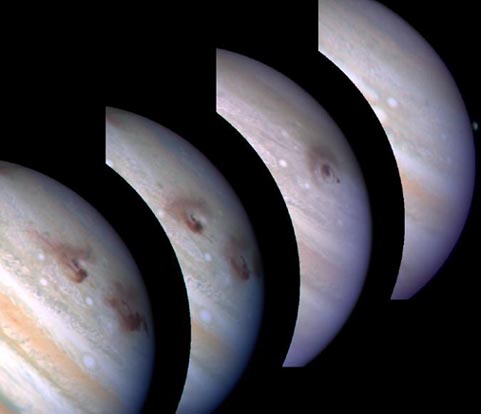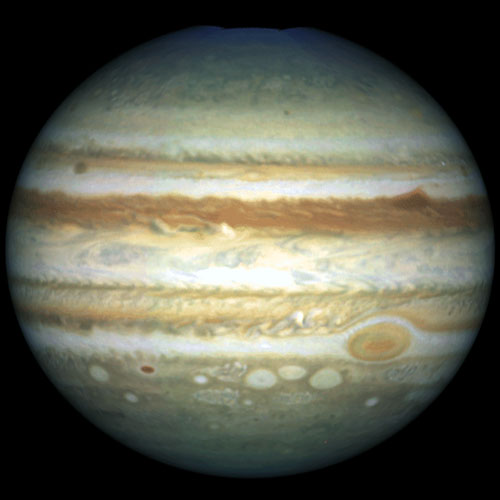قمرهای گالیله ای مشتری (1) Jupiter’s Galilean moons
حتی یک تلسکوپ بسیار کوچک هم میتواند چهار قمر بزرگ مشتری را بهدور آن شناسایی کند. این قمرها به ترتیب فاصله از مشتری، یو، اروپا، گانیمید و کالیستو[1] نام دارند. اندازه آنها قابل مقایسه با ماه است. کشف آنها در سال1610 توسط گالیله به وی نشان داد که تمام اجسام منظومه شمسی بهدور خورشید نمیگردند، واین گواه دیگری بر مدل کپرنیکی منظومه شمسی بود.

[1]- Io, Europa, Ganymeade and Callisto
[2]- این دوره تناوب مربوط به حالتی است که زمین، مشتری و خورشید تقریباً در یک راستا هستند. در این نقطۀ مداری، برای چند روز، فاصلۀ زمین از مشتری تقریباً ثابت میماند. (مترجم)
Even a very small telescope can detect the four major moons of Jupiter as they
weave their way around it. In order of distance from Jupiter, they are called Io,
Europa, Ganymeade and Callisto and are comparable in size with our Moon .
Discovered by Galileo in 1610, they showed him that Solar System
objects did not all have to orbit the Sun, giving further evidence for the Copernican
model of the Solar System.
Observations in 1676 made by the Danish astronomer Christensen Roemar
of the times of their eclipses as they passed behind Jupiter led to the first
determination of the speed of light. An eclipse of Io occurs every 42.5 h – the
period of its orbit – and it thus provides a form of cosmic clock. However, Roemar 112 Introduction to Astronomy and Cosmology
observed that the 40 orbits of Io during the time that the Earth was moving
towards Jupiter took a total of 22 min less than when the Earth was moving away
from Jupiter ∼6 months later. The change in apparent period is due to the Dop-
pler effect and this enabled him to calculate the ratio of the velocity of light to
the orbital speed of the Earth around the Sun. He derived a value for this ratio of
about 9300. As the orbital speed of the Earth is ∼30 km s-1 this gave a value (actually
calculated by Christiaan Huygens from Roemar’s observations) for the speed of
light of about 279 000 km s-1.




 بنام آفریدگار بی همتا
بنام آفریدگار بی همتا